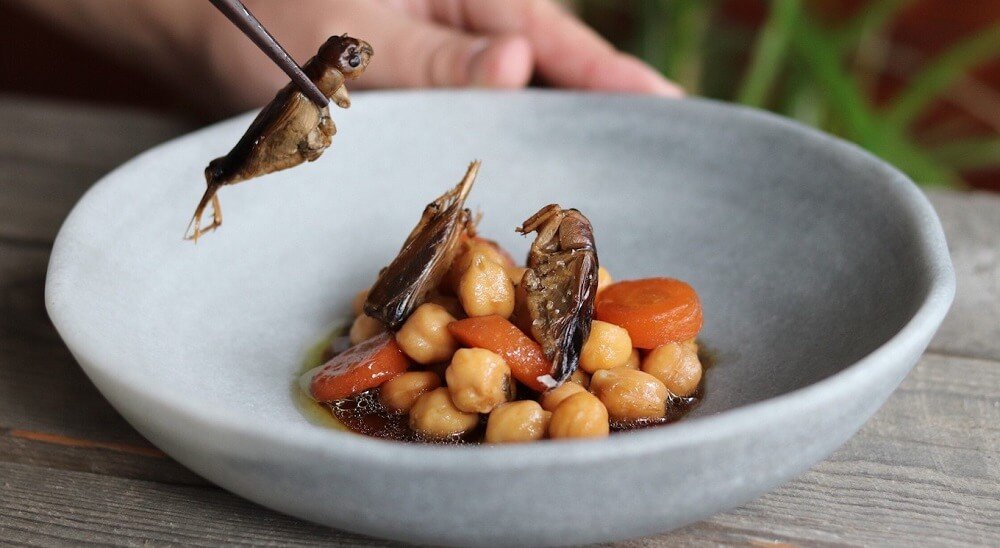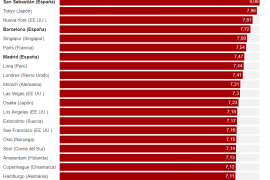FAO is the Food and Agriculture Organization of the United Nations. Its mission is to contribute to a world where food security is paramount, that is, so everyone can enjoy healthy, sufficient nutrition. A few years ago, it began to issue recommendations to incorporate insects as a source of protein in standard nutrition globally, a proposal that initially caused a furore, especially in the western world where this custom is foreign. But it is worth noting that entomophagy—the eating of insects—is already part of the usual diet of about 2 billion people, especially in Asia, Africa and Latin America.
We do in fact all eat insects on a regular basis, even though we may not be aware of it. Many foods that we usually consume naturally contain fragments of insects, and the regulations do not consider it a problem or as lessening its quality. The cereal flour, citrus fruit, chocolate, canned maize, cinnamon, nutmeg or thyme we consume include insects that we eat without realising. It is estimated that we ingest about 500 grams of insects annually without being aware of it. And nothing comes of it. In fact, insects pose a reduced risk of transmission of diseases if we compare them with any other animal protein we include in our diets.
In Europe, eating insects is generally considered repulsive, although there are classic products that include them. The traditional Sardinian and Corsican cheese casu marzu is a variety of pecorino cheese that contains thousands of live fly larvae that the makers add to break up the fatty acids and improve its fermentation. Until now, its sale was banned in Italy, although cottage production was tolerated. The enactment of new European legislation may open up the legal sale of this product, as well as of many others that use insects as ingredients.
Over 1,900 species of insects are consumed worldwide. According to FAO data, the most widely consumed are beetles (31%), caterpillars (18%) and bees, wasps and ants (14%). They are followed by grasshoppers and crickets (13%), cicadas, cochineals and bed bugs (10%), termites (3%), dragonflies (3%), flies (2%), and other species (5%). Most are harvested directly from the wild, although techniques for breeding them in captivity are improving.
Why does FAO insist on recommending consumption of insects? Basically for reasons of sustainability and efficiency. Because they are cold-blooded animals, they are very efficient at feed conversion. On average, insects can convert 2 kg of feed into 1kg of insect mass, whereas conventional livestock requires up to 8 kg of feed to produce a 1kg increase in body weight. Insects can feed on biological waste, which they transform into high quality protein, and use much less water in the process, which also generates less waste. These advantages will become increasingly relevant, especially given that the planet’s population will reach 9 billion inhabitants by 2050, and that FAO estimates that animal protein production should be increased by 60%, while there are increasingly scarce natural resources.
The Petràs mushroom stall at the Boqueria market is a pioneer marketer of edible insects in Barcelona. In 2008 they had to stop selling because there was no European or Spanish regulation in this regard and they received warnings to desist from the authorities. But thanks to the new law passed by the European Parliament in 2015 and which came into force at the beginning of 2018, the importation and rearing of exotic products and the registration and legalisation of new foods is now possible. Roast and vacuum packed grubs, crickets, scorpions and beetles are again available at the Petras stall and at their online store. They are not the only ones joining in the fray. The Carrefour supermarket chain has also begun to market a range of insect-based snacks: chocolate or fruit bars with crickets, crickets with smoky onions, spicy grubs or with garlic and fine herbs… The Don Grillo online store is also about to go into operation and will offer a wide range of products, some produced in the European Union. These are specialities that are not yet formally included in the list of new foods approved by the European Union, but which are currently tolerated. However, it does not seem likely that these novelties will effectively replace other animal protein sources any time soon: insect products go for €300 to €500 per kilo at Carrefour. For now, the insects we can buy here will more likely satisfy the snobbish curiosity of Western consumers than modify our nutritional pyramid.

But the eventual increase in demand can also generate new areas of business. At the moment there is no authorised plant in Spain for insect production for human consumption. However, there are already start-ups like Nutrinsect—led by Catalan José Vidal Obon—who plan to open an insect farm in Navarre with the support of the agrifoods accelerator Orizont, aiming to produce food intended primarily for animal feed and which will require an investment of about five million euros. For seven years now, the use of seven farmed insects has been authorised for pet-foods in the European Union. Their use has also been authorised for fish and seafood farming since 2017, and since the beginning of this year for human consumption. In the next two years, this will be extended to feed for poultry and pig farming, and subsequently as feed for cattle. Nutrinsect will breed common crickets (acheta vulgaris), mealworm (tenebrio molitor) and the black soldier fly (hermetia) in the larval phase. Its aim is to produce 4,000 tonnes of feed every year for use in fish farming, and 1,000 tonnes for food supplements for athletes, in the form of energy bars or snacks.
One last question is whether insects will end up conquering the terrain of haute cuisine. In Asia, renowned restaurants include dishes with insects on their menus, but prudence rules in Europe. Madrid-based Dabiz Muñoz (DiverXO) presented a recipe that included live Japanese Toge ants, but it is not usually to be found on the menu at his restaurants. Danish restaurant Noma, which has revolutionised the world of gastronomy over the last years with the help of their chef Rene Redzepi, included fare with insects, dead or alive, in some dishes on their menu until last year. Redzepi also leads the Nordic Food Lab, a kind of laboratory of culinary ideas that has been researching into insects since 2013. The results may well be seen soon, if the new European legislation ends up overcoming the timidity of the great chefs in this field. But for now, if you see a bug on your plate, you’d best fill in a complaint form.





















